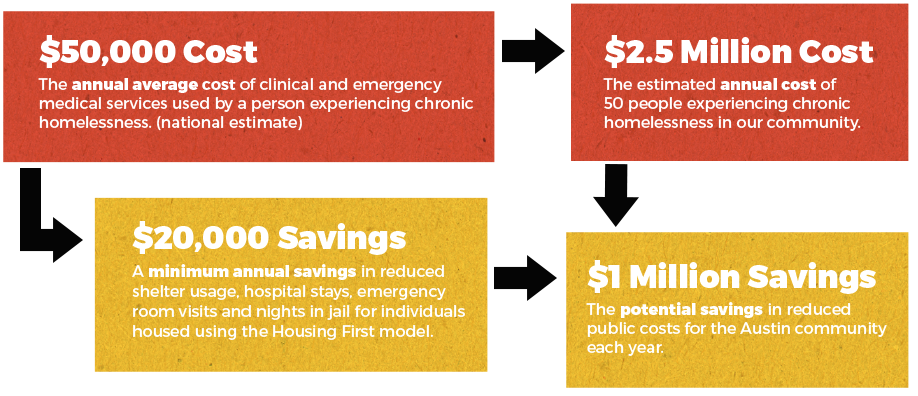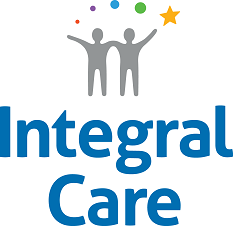Austin and Travis County are experiencing a significant increase in homelessness – a recent report from the Ending Community Homelessness Coalition (ECHO)* identified 2,147, reflecting a 5% increase from the total count in 2017.
Integral Care offers a path to housing to the 36% who are chronically homeless. These men and women are:
- are experiencing long-term homelessness,
- are living with multiple health conditions including mental illness, substance use issues and chronic disease,
- are not able to access traditional housing.
Housing First Oak Springs will provide crucial, sometimes life-saving services, to individuals who have been chronically homeless – an individual with a disabling condition who has been continuously homeless for a year or more. Oak Springs will also save our community a considerable amount of public resources. There are housing programs and facilities in the Travis County community that are somewhat similar, but they do not follow the Housing First model.
* Ending Community Homelessness Coalition, Homelessness in Austin: Current Needs and Gaps Report, 2017
Let’s look at the positive impact that housing 50 people has on our community and public resources:
The Impact of Housing 50 People

Housing First Impact
Communities across the United States – including Seattle, New York, Salt Lake City, and Portland, ME – have seen phenomenal results using the Housing First model. In New York and Los Angeles, analysis of Housing First showed that housing and supporting people experiencing chronic homelessness resulted in savings of approximately $20,000 per year, per individual. Other communities have seen similar results.
Since 2013, Integral Care has used the Housing First model in a variety of sites throughout Austin. Experience has shown that it works in our community to increase housing stability and reduce overutilization of public resources. Eighty-five percent of individuals stay housed for 12 months or more. An analysis of 39 people housed for 12 months and provided wraparound services showed significant reductions in encounters with law enforcement and decreased utilization of health services such as EMS transport and hospital stays. These included:
- 71% fewer inpatient psychiatric hospital stays
- 29% fewer inpatient medical hospital stays
- 51% fewer days spent incarcerated
These and other dramatic decreases in service utilization translate into real savings for our community. Based on the results achieved through our current Housing First efforts, we estimate that housing 50 more individuals, who are chronically homeless, will result in savings of at least $1 million per year.
The origins of Housing First Program
Video courtesy of Now What with Ryan Duffy via the Huffington Post highlighting the Department of Veterans Affairs initiative to end Veteran homelessness using the Pathways Housing First model created by Sam Tsemberis.
